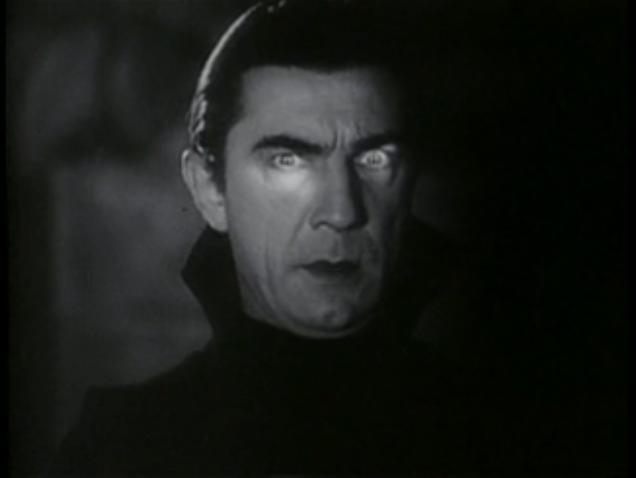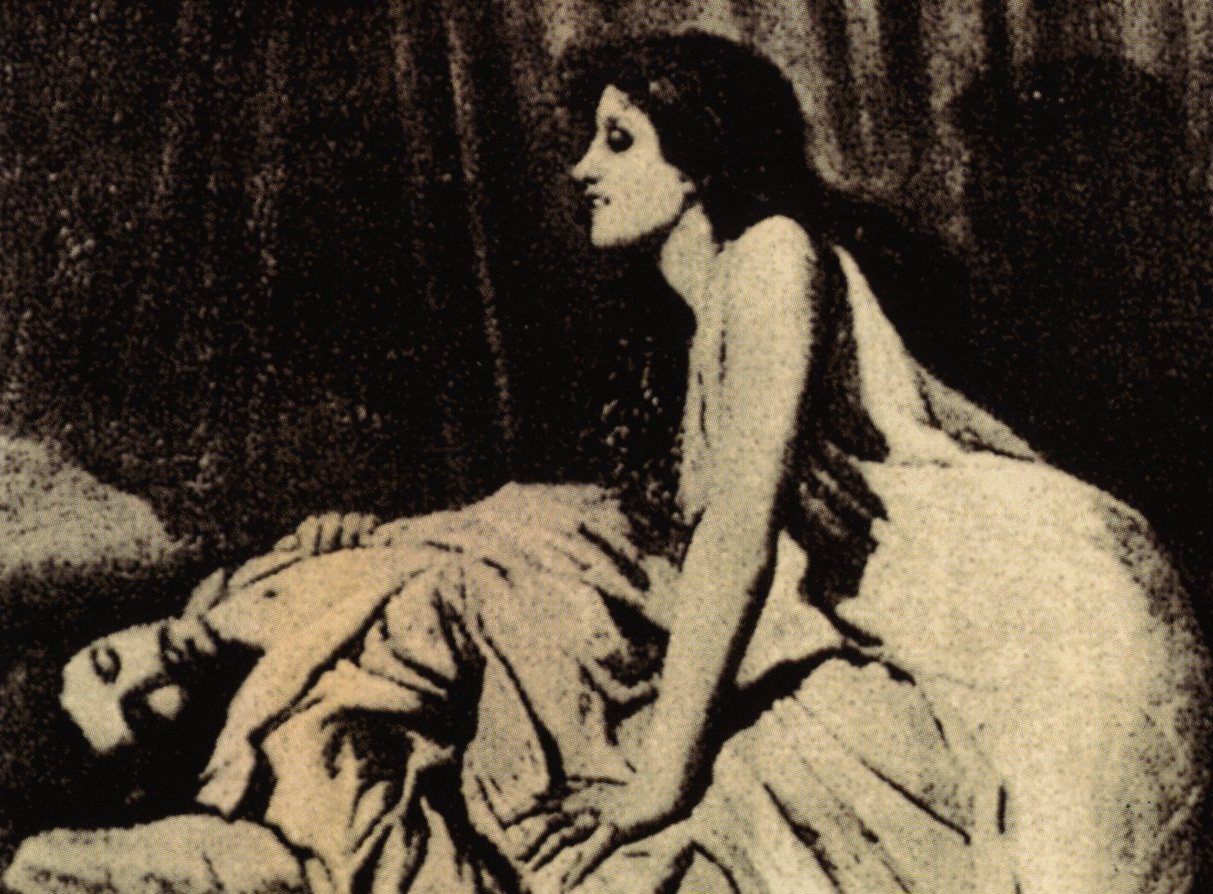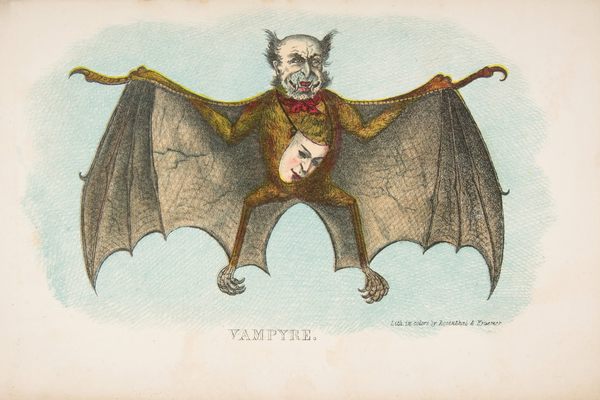Here’s How Long it Would Take for Vampires to Annihilate Humanity
To vanquish a vampire, one generally employs a stake, a cross, a string of garlic, or a combination of all three. But there’s one highly effective anti-vampire weapon that few think to use: math.
A surprisingly large number of academic studies—as in, more than one—have applied mathematical modeling to the concept of human-vampire co-existence. Using the depiction of bloodsuckers in various forms of media, from Bram Stoker’s Dracula to True Blood, these papers look at whether Earth’s vampire population would inevitably annihilate humanity, and, if so, how long it would take.
Mathematically influenced scholarship of vampire-human relations took off in the early ’80s courtesy of Richard Hartl and Alexander Mehlmann, Austrian mathematicians with a mutual penchant for the undead. In 1982, their paper, titled “The Transylvanian Problem of Renewable Resources” was published in the operations research journal RAIRO. In it, Hartl and Mehlmann posited “optimal bloodsucking strategies for dynamic continuous vampires.”
In doing so, they divided vampires into three categories: the “asymptotically satiated vampire,” the “blood maximizing vampire,” and the “unsatiable vampire.” Regardless of the type of vampire, though, they found that bloodsuckers can’t help but face diminishing resources: “[W]e are facing a typical consumption-resource trade off. The vampire society derives utility from consumption of blood but in sucking the blood of a human being and in turning him to a vampire the resource of human beings is reduced whereas the number of vampires is increased. Both of these effects diminish the resource of humans per vampire curtailing future possibilities of consumption.”
Hartl and Mehlmann further explored this vexing conundrum in a paper published in Applied Mathematical Modeling the following year. “The authors are well-aware that belief in vampires seems highly irrational to a scientist,” they wrote in “Convex-Concave Utility Function: Optimal Blood-Consumption for Vampires,” before launching into a proposed vampire self-sustainability model based on the Lotka-Volterra prey-predator system.

There was a lull in vampiric math papers during the ’90s and early aughts, but in 2007, another article analyzed the plausibility of human-vampire co-existence. In “Cinema Fiction vs. Physics Reality: Ghosts, Vampires, and Zombies,” published in Skeptical Inquirer, authors Costas Efthimiou and Sohang Gandhi presented a pessimistic view of humanity’s future in the face of thirsty vampires. “The fact of the matter is,” they wrote, “if vampires truly feed with even a tiny fraction of the frequency that they are depicted to in movies and folklore, then the human race would have been wiped out quite quickly after the first vampire appeared.”
Working with the conservative estimate that vampires only need to feed once a month, Efthimiou and Gandhi looked at population stats and concluded that vampires would eliminate humans within three years. Put simply, they said, “vampires cannot exist, since their existence contradicts the existence of human beings.” (They also threw in a bit of sass: “Apparently, whomever devised the vampire legend had failed his college algebra and philosophy courses.”)
This simple and stark analysis of vampire-hastened human mortality irked Oxford statistics professor Dino Sejdinović, who refuted Efthimiou and Gandhi in his own paper, “Mathematics of the Human-Vampire Conflict,” published in Math Horizons in 2008. Relations between vampires and non-vampires, he wrote, “are much more sophisticated than those presented by Efthimiou and Ghandi.” Sejdinović’s qualms with their paper included the fact that “vampires are presented exclusively as greedy consumers: a rational strategy of managing their human resources is not considered.” He also noted that Efthimiou and Ghandi’s model did not account for the death rate of vampires—or, as he put it, “the death-death rate since they are already dead”—courtesy of stake-wielding humans.

One of the most recent, and most comprehensive, mathematical analyses of human-vampire interaction came in the form of “Mathematical Models of Interactions between Species: Peaceful Co-existence of Vampires and Humans Based on the Models Derived from Fiction Literature and Films,” published in Applied Mathematical Sciences in 2013. Drawing on a wide range of pop-cultural depictions, authors Wadim Strielkowski, Evgeny Lisin, and Emily Welkins defined and analyzed three models of vampire-human co-existence.
According to the first scenario, the Stoker-King model—based on vampires as delineated in Bram Stoker’s Dracula and Stephen King’s Salem’s Lot—80 percent of the human population would be exterminated within the first 165 days of initial vampiric activity. “The model analyzed in this scenario is very similar to an epidemic outbreak caused by a deadly virus,” said the authors. They also noted that, based on the daily feeding that Stoker and King’s vampires appear to require, it would take just two months for the number of global vampires to jump from one to 4,000.
The second scenario, the Rice model, is based on Anne Rice’s Vampire Chronicles, in which a feeding vampire does not necessarily kill a person, but “can attack a human being, feed on it and leave it to live.” Despite the not-necessarily-lethal approach, the model still predicts the total extinction of humanity within 50 years from the first vampire attack.
These two scenarios paint a grim picture, but hope arrives in the form of the Harris-Meyer-Kostova model, based on a combination of Charlaine Harris’s series of Sookie Stackhouse novels, Stephenie Meyer’s Twilight saga, and Elizabeth Kostova’s 2005 bloodsucker book, The Historian—all of which take place in a world in which vampires peacefully co-exist with humans. The initial conditions of the Harris-Meyer-Kostova model involve five million vampires, 6.16 billion people, and organized groups of “drainers”—humans who attack vampires to drain their blood and leave them for dead. Within this setup, “there are system parameters … that would stabilize the populations of humans and vampires in time”—meaning that humans could stand a chance.
The resulting human-vampire ecosystem, however, would be precarious: “Under certain conditions, the Harris-Meyer-Kostova model seems plausible and allows for the existence of vampires in our world. Peaceful co-existence of two species is a reality. However, this symbiosis is very fragile and whenever the growth rate of human population slows down, the blood thirst of vampires accelerates, or vampire drainers become too greedy, the whole system lies in ruins with just one population remaining.”
This story originally ran in 2015; it has been updated for 2022.











Follow us on Twitter to get the latest on the world's hidden wonders.
Like us on Facebook to get the latest on the world's hidden wonders.
Follow us on Twitter Like us on Facebook